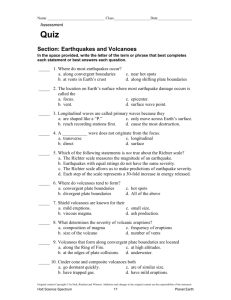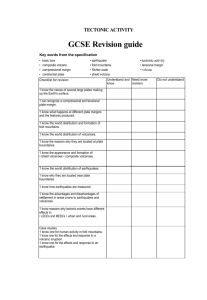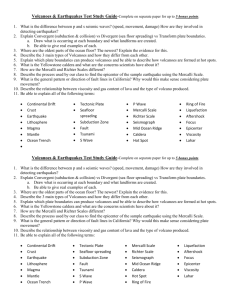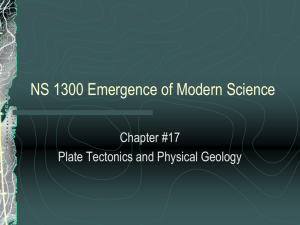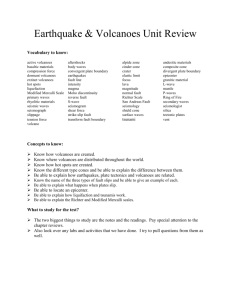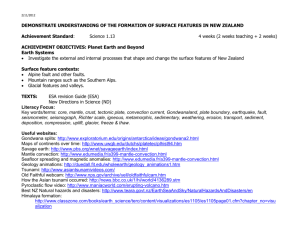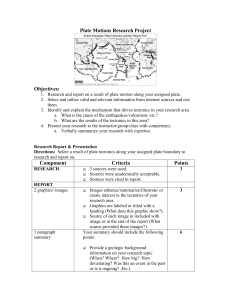Geology 12 Final Exam Study Package
advertisement
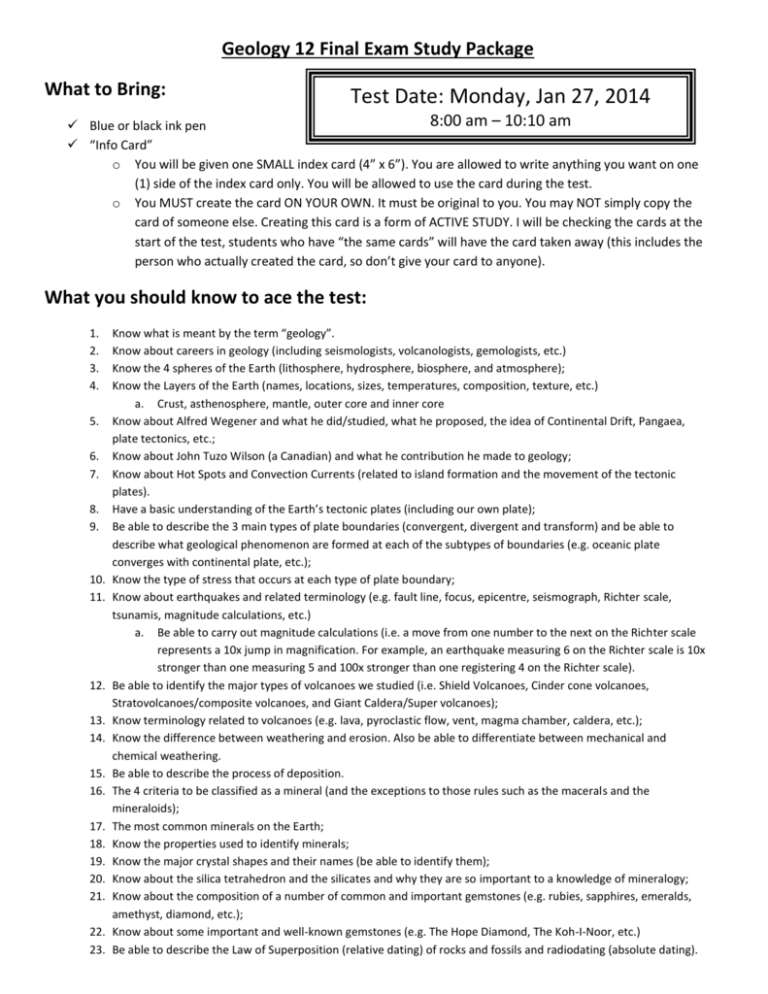
Geology 12 Final Exam Study Package What to Bring: Test Date: Monday, Jan 27, 2014 8:00 am – 10:10 am Blue or black ink pen “Info Card” o You will be given one SMALL index card (4” x 6”). You are allowed to write anything you want on one (1) side of the index card only. You will be allowed to use the card during the test. o You MUST create the card ON YOUR OWN. It must be original to you. You may NOT simply copy the card of someone else. Creating this card is a form of ACTIVE STUDY. I will be checking the cards at the start of the test, students who have “the same cards” will have the card taken away (this includes the person who actually created the card, so don’t give your card to anyone). What you should know to ace the test: 1. 2. 3. 4. 5. 6. 7. 8. 9. 10. 11. 12. 13. 14. 15. 16. 17. 18. 19. 20. 21. 22. 23. Know what is meant by the term “geology”. Know about careers in geology (including seismologists, volcanologists, gemologists, etc.) Know the 4 spheres of the Earth (lithosphere, hydrosphere, biosphere, and atmosphere); Know the Layers of the Earth (names, locations, sizes, temperatures, composition, texture, etc.) a. Crust, asthenosphere, mantle, outer core and inner core Know about Alfred Wegener and what he did/studied, what he proposed, the idea of Continental Drift, Pangaea, plate tectonics, etc.; Know about John Tuzo Wilson (a Canadian) and what he contribution he made to geology; Know about Hot Spots and Convection Currents (related to island formation and the movement of the tectonic plates). Have a basic understanding of the Earth’s tectonic plates (including our own plate); Be able to describe the 3 main types of plate boundaries (convergent, divergent and transform) and be able to describe what geological phenomenon are formed at each of the subtypes of boundaries (e.g. oceanic plate converges with continental plate, etc.); Know the type of stress that occurs at each type of plate boundary; Know about earthquakes and related terminology (e.g. fault line, focus, epicentre, seismograph, Richter scale, tsunamis, magnitude calculations, etc.) a. Be able to carry out magnitude calculations (i.e. a move from one number to the next on the Richter scale represents a 10x jump in magnification. For example, an earthquake measuring 6 on the Richter scale is 10x stronger than one measuring 5 and 100x stronger than one registering 4 on the Richter scale). Be able to identify the major types of volcanoes we studied (i.e. Shield Volcanoes, Cinder cone volcanoes, Stratovolcanoes/composite volcanoes, and Giant Caldera/Super volcanoes); Know terminology related to volcanoes (e.g. lava, pyroclastic flow, vent, magma chamber, caldera, etc.); Know the difference between weathering and erosion. Also be able to differentiate between mechanical and chemical weathering. Be able to describe the process of deposition. The 4 criteria to be classified as a mineral (and the exceptions to those rules such as the macerals and the mineraloids); The most common minerals on the Earth; Know the properties used to identify minerals; Know the major crystal shapes and their names (be able to identify them); Know about the silica tetrahedron and the silicates and why they are so important to a knowledge of mineralogy; Know about the composition of a number of common and important gemstones (e.g. rubies, sapphires, emeralds, amethyst, diamond, etc.); Know about some important and well-known gemstones (e.g. The Hope Diamond, The Koh-I-Noor, etc.) Be able to describe the Law of Superposition (relative dating) of rocks and fossils and radiodating (absolute dating).

